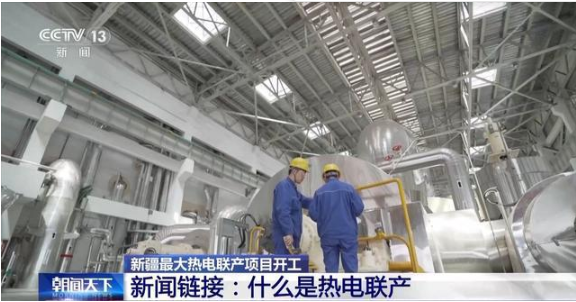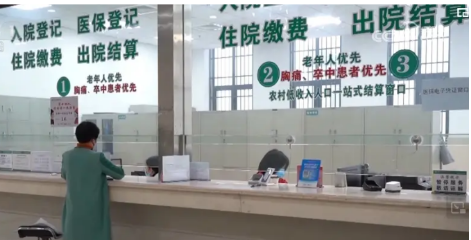Palliser Capital Urges Fellow Shareholders to Vote FOR Resolution Demanding a Fully Transparent and
Palliser urges shareholders to vote FOR resolution 24 at the Rio Tinto Plc AGM on 3 April 2025 and resolution 21 at the Rio Tinto Limited AGM on 1 May 2025
LONDON -- (BUSINESS WIRE) --
Palliser Capital (“Palliser”) today published a letter to shareholders of Rio Tinto (the “Company”) calling for them to vote in favor of the long-overdue full and proper investigation into the merits of unification of Rio Tinto’s dual listed company (“DLC”) structure, in line with the recommendations from leading international proxy advisors ISS and Glass Lewis.
Palliser’s letter to shareholders outlines the corporate governance shortcomings of Rio Tinto’s cursory internal review to date and its subsequent actions to avoid the straightforward enhanced review Palliser has requested:
- Dismissing empirical evidence of the multiple significant benefits and value maximising opportunity presented by unification – grounded in no fewer than 12 precedent DLC unwinds.
- Dismissing the findings of the independent appraisal report by Grant Thornton Australia, which concluded, based on publicly available information, that the advantages of Rio Tinto’s potential unification outweigh the disadvantages.
- Attempting to disenfranchise the Limited line – 23% of Rio Tinto’s shareholder base – from having their vote on their resolution.
- Fighting against the findings of the world’s leading international proxy advisors – ISS and Glass Lewis.
Palliser’s letter and other materials on its engagement with Rio Tinto can be found at UnifyRio.com.
The full text of Palliser’s letter follows:
|
To: |
|
|
The Shareholders of Rio Tinto Plc (“PLC”) |
|
|
|
|
The Shareholders of Rio Tinto Limited (“LTD”) |
|
|
|
|
(LTD and PLC together, “Rio Tinto” or the “Company”) |
|
|
|
|
|
|
CC: |
|
|
The Board of Directors of Rio Tinto (the “Board”) |
Dear Shareholders,
Resolution 24 at the PLC AGM on 3 April 2025 and resolution 21 at the LTD AGM on 1 May 2025
We draw your attention to our materials publicly available at https://unifyrio.com
We write on behalf of Palliser Capital (UK) Limited and its affiliates (together, “Palliser”, “we”, “us” or “our”).
For almost a year now, we have been pushing hard for an independent, comprehensive and transparent investigation into the unification of Rio Tinto’s dual listed companies (“DLC”) structure, given that the Company’s cursory internal closed-door review of the matter fell woefully short of market expectations.
While our requested review is entirely in line with best practices for a matter of such importance, Rio Tinto has gone to extreme lengths to escape it.
We met with management several times last year to explain the compelling value case for unification. They were not interested in what we had to say.
We shared extensive analysis at https://unifyrio.com to prompt an open and rigorous debate on the topic. The Company dismissed our work and remained adamant that there would be no benefits from unification whatsoever.
We co-filed a resolution at the Rio Tinto AGM to allow the broader investment community to share their views on an issue of such critical importance. The Board took the egregious step of attempting to disenfranchise the LTD line – 23% of Rio Tinto’s shareholder base – from having their vote.
Time and time again, we presented overwhelming evidence – backed by empirical data – and grounded in the value-maximizing rationale behind no fewer than 12 precedent DLC unifications that received 98-99% shareholder support on average, were backed by >136 company directors and were unanimously recommended by leading global proxy advisors1 alike. The Company dismissed it all on the basis that Rio Tinto is somehow different, but stated confidentiality reasons precluded them from disclosing why.
We commissioned Grant Thornton Australia to produce an independent appraisal report on unification, which concluded, based on publicly available information, that the advantages of unification outweigh the disadvantages for both PLC and LTD shareholders. The Board chose to ignore all of these stated benefits of unification and continued to argue that an independent review of their own was unnecessary.
Now, both of the world’s leading international proxy advisors – ISS and Glass Lewis – have endorsed our resolution.
These firms are most trusted for guiding shareholders all around the world to informed voting decisions and set the gold standard for good governance by company boards globally.
The message from all of their extensive assessment is clear – Rio Tinto must step up for its investors and deliver the review we all deserve.
With the onus squarely on the Board to justify why the unification of Rio Tinto would alone fail to unlock the universally agreed upon multiple significant advantages of a simplified structure that every other former large cap company with a DLC structure has benefited from, our request for an independent and transparent review is entirely fair and reasonable.
Our request is not difficult or onerous for the Company to comply with. It carries no downsides for them. Yet still the Board refuses to listen and scrambles to defend a case it has already lost from the critical corporate governance lens.
We now implore shareholders to follow the guidance of the most trusted independent voices in the global investor community – ISS and Glass Lewis – and vote FOR our resolution.
Rio Tinto’s unconvincing rationale to protect its closed-door internal review
Claim 1: Rio Tinto is different to other DLCs
We have set out the clear and consistent empirical rationale against DLC structures, with the same structural deficiencies cited globally time and time again: 1) a structural value gap between the two lines of “equivalent” DLC shares; 2) an undisputable impediment on strategic flexibility; 3) an inefficient utilisation of franking credits in the case of the UK/Australian DLCs; and 4) a sub-optimal corporate governance regime.
We have calculated the damaging effects of these deficiencies in the case of Rio Tinto: 1) an estimated c.US$35.6 billion of additional book value unnecessarily lost from Rio Tinto’s inability to execute stock-based M&A2; 2) an estimated c.US$14.7 billion of value foregone through the sub-optimal utilisation of franking credits3; 3) a glaring >US$20 billion structural value gap between the PLC and LTD shares today; and 4) a failure to commence any new shareholder buyback programmes since September 2018.
ISS notes that the BHP transaction particularly sets “a precedent that is difficult to dismiss,”4 evidently unconvinced by the Company’s explanation that “BHP’s facts and circumstances were materially different than Rio Tinto’s”.5
Any reasonable investor would agree that in virtually every respect – size, structure, earnings composition, asset overlap, and strategic direction – Rio Tinto and BHP are as comparable as any two companies in the world. They have historically operated under nearly identical DLC structures, shared a dominant presence on both the ASX and the LSE and feature significant cross-ownership among institutional investors.
From an operational standpoint, the similarities are even more pronounced. They both derive the vast majority of their earnings – >70% at the time of BHP’s unification and c.80% for Rio Tinto today – from Australian-sourced iron ore in the Pilbara, where they dominate global supply with near-identical cost structures, infrastructure integration and multi-decade reserve longevity. Beyond iron ore, Rio Tinto and BHP are joint-venture partners in Escondida and the Resolution Copper Project in Arizona.
In the eyes of investors, these two companies’ trajectories are as intertwined as could be, save for one key difference: Rio Tinto continues to contend with the complications and constraints of its DLC structure - compounded as they are by a London-based C-suite managing the group’s core assets from >10,000 km6 and 11 time zones away. On the other hand, BHP reaps the enhanced returns unlocked through a normalised and agile structure, with a single Australian-domiciled holding company and a senior executive team that is close to its core asset base.
Claim 2: The Board has already published its conclusions and disclosure of further analysis would be prejudicial to shareholders’ interests
Rio Tinto describes its recommendations as being “critically and comprehensively tested and challenged by the Board”7 but Glass Lewis declares that they fail to demonstrate “full and proper engagement in the unification question”.8
The Company continues to argue its disclosures are adequate for investors, but ISS finds they “lack detail and are difficult to reconcile with the BHP experience and public information.”9
While the Board explains away its sparse analysis on the grounds of confidentiality and commercial sensitivity, there are numerous arguments in the unification debate that do not rely on non-public information. You do not, for example, require confidential information to demonstrate – as we have done – the serious practical difficulties around issuing equity across two lines of stock that trade at such a significant price disparity, nor that the Australian markets are highly capable of absorbing the incremental supply of LTD shares upon unification in the long term.
With the onus clearly on Rio Tinto to act with as much transparency as possible as a publicly listed company with continuing disclosure obligations, we question just how much of its information requires protection or why it has not considered ISS’s simple solution to its dilemma: “publishing a report from a recognised independent expert would help put the issue behind if that is warranted”.10
Claim 3: An independent expert report would be duplicative and would divert company resources and time
The Board continues to protest that an independent expert report would be duplicative, and that the advice of its existing advisers is enough.
However, their advice does not amount to a proper cost/benefit analysis of unification. It does not weigh up all relevant factors in the round. Their advisors have merely looked at discrete and isolated cost issues cherry-picked by management for their own closed-door review.
In any event, those advisers all have significant relationships with Rio Tinto. For example, J.P. Morgan has served as corporate broker to Rio Tinto since at least 2009, as well depositary bank for Rio Tinto’s ADRs since 2005. Their Global Chair of Investment Banking has served on Rio Tinto’s Board since 2020.
Rio Tinto is also one of EY’s “G360” accounts, which identifies key client relationships within that firm. Most recently, Goldman Sachs, Linklaters, Allens and J.P. Morgan have all acted for Rio Tinto in relation to its acquisition of Arcadium Lithium.
What we are asking for is a genuinely independent review which balances all of the advantages and disadvantages of unification to assess whether that step is in the best interests of PLC and LTD shareholders. This is what Grant Samuel did in the case of BHP’s unification (https://www.bhp.com/-/media/documents/investors/shareholder-information/2021/unification/3_circular.pdf) and what Grant Thornton Australia did in the case of Rio Tinto’s potential unification based on publicly available information.
The costs required to commission such a report are more than justified, given the >US$20 billion of value on the table for shareholders. As Glass Lewis most eloquently put it: “If there is even a small chance that such huge value will be unlocked, requiring the Board to undertake an independent review into the question of unification is a worthwhile endeavor”.11
Claim 4: the Board has engaged extensively with Palliser and a wide range of other shareholders
The Board’s “willingness” to engage on the topic is best illustrated by its omission of our resolution at the LTD AGM, thereby excluding 23% of shareholders from voting on a topic of equal importance to them. It was only after we raised serious questions around the legitimacy of the Board’s decision to side-step the “joint electorate” principle on this occasion that our resolution was included at the LTD line. It was only after we demonstrated that their DLC structure was wholly unworkable if it allowed for selective disenfranchisement of shareholder votes that the Board reversed its original decision.
As for its extensive engagement with us - the CEO met with us after no less than 10 requests for a meeting, in which we stressed the importance of resolving the grave difference of opinions between us. Even when we did meet, there was little feedback on the points we raised and even less willingness to find a path to resolving our diverging views.
Next Steps
As investors, our starting point is to trust the Board to act in accordance with its responsibilities to the Company and its stakeholders. On this occasion, however, the “closed-door” internal review of unification overseen by the Board has, quite simply, proved undeserving of that trust.
We cannot trust a review that finds not a single benefit of unification; we cannot believe claims by the CEO that shareholder support for an unwind of the archaic structure would be “impossible”, when shareholders of former DLCs have almost unanimously voted for unification. We cannot trust that the “simply enormous friction costs” of unification render it unfeasible12 when there is no breakdown of that calculation or assessment of the likelihood of those costs arising. We cannot believe that the “DLC structure continues to be effective” when there is a structural value gap between the shares of PLC and LTD of more than US$20 billion today. We cannot trust the Company’s anomalous conclusions if it will not even provide the information we need to understand them.
Enough is enough.
This is not the time for Rio Tinto to worsen the governance issues around its review with more obstinance and entrenchment of its already discredited position. Nor is it the time for the Chair to launch an unnecessary attack on ISS for its fair and reasonable analysis,13 when he should be leading by example in a company struggling with concerning behaviours and attitudes.
It is time for the board of the second largest mining company in the world to show that it is willing to listen to the investor community and accept when it has fallen short of market standards – as ISS and Glass Lewis both indicate.
It is time to deliver the long overdue proper examination of unification that shareholders deserve.
We implore all shareholders to vote FOR our resolution at the forthcoming AGMs of Rio Tinto to show the Board that it WILL be held to account when it fails to adhere to the principles of transparency, fairness and accountability that underpin the trust and confidence we place in it.
Yours faithfully
For and on behalf of
Palliser Capital (UK) Limited
___________________________
By: James Smith, Chief Investment Officer
About Palliser Capital
Palliser Capital is a global multi-strategy fund. Our value-oriented investment philosophy is applied to a broad range of opportunities across the capital structure with a focus on situations where positive change and value enhancement can be achieved through thoughtful, constructive and long-term engagement with companies and across a range of different stakeholder groups. All available materials on Palliser’s ongoing engagement with Rio Tinto can be found at: UnifyRio.com.
___________________________
1 ISS recommended in favour of all of these unifications. Since the formation of Glass Lewis in 2004, it recommended in favour of all of the unifications, save for Thomson Reuters on a technicality that the Canadian corporate law requirements relating to executive pay that applied post-unification were not as stringent as those in the UK pre-unification.
2 Since inception of Rio Tinto’s DLC structure in 1995.
3 Since inception of Rio Tinto’s DLC structure in 1995.
4 Source: page 62 of the ISS Proxy Analysis relating to Rio Tinto Plc dated 18 March 2025.
5 Source: Rio Tinto’s letter to shareholders dated 17 March 2025.
6 On a value weighted average basis.
7 Source: Rio Tinto Statement on AGM resolution to review the Rio Tinto dual-listed companies structure dated 19 March 2025.
8 Source: page 48 of the Glass Lewis Proxy Paper: Rio Tinto Plc, dated 13 March 2025.
9 Source: page 62 of the ISS Proxy Analysis relating to Rio Tinto Plc dated 18 March 2025.
10 Source: page 62 of the ISS Proxy Analysis relating to Rio Tinto Plc dated 18 March 2025.
11 Source: Page 48 of the Glass Lewis Proxy Paper: Rio Tinto Plc, dated 13 March 2025.
12 Source: Page 9 Rio Tinto UK Analyst Q&A Conference Call dated 31 July 2024.
13 Source: AFR, Rio Chairman takes aim at proxy advisor over London listing vote call dated 21 March 2025.
- 盎锐科技助力河南省职业技能大赛,三维激光扫描仪数据采集首次进入赛项中
- 威睿三电 快人一步|威睿亮相2024台州国际汽车工业博览会
- Board Recognized as a Leader in the Gartner® Magic Quadrant™ for Financial Planning Software for Thi
- 众望所归处,闲庭信步时 | 富春里景观示范区倾城绽放,实景共鉴
- 世界经济论坛2025年年会:沙特外交大臣称加沙停火后中东将迎来新机遇
- 天友到家领“鲜”升级,开学季活动引爆重庆
- 首尔半导体的专利执行导致侵权产品在八个欧洲国家被禁售
- 白岚城市首店相继启幕 同风而至 庆呈新境
- 2024年三亚国际游艇展开幕 王祺扬出席并致辞
- 香港忠意保险荣获「10Life 5星保险大奖2025」多项殊荣
- 中网智媒“智能机器人”构建全媒体智能新生态
- 诺为泰凭借其在业务拓展、创新和营销方面的卓越表现荣获2024年临床试验竞技场卓越奖
- Kioxia提供最新一代UFS Ver. 4.0嵌入式闪存器件样品
- LUERLING品牌NMN面膜进驻美国特搜连锁店
- 告别塑料餐,迎接纳优姆绿色有机煲仔饭时代!
- 独眼阿姨眼球“卡住”固定向内下偏斜,福州爱尔眼科专家巧施改良术助其改“斜”归正
- WhatsApp频道号协议号解析:群发营销的利器
- Elevate Drone Efficiency with Precision Carbon Fiber Sheet Solutions
- 通付盾|打造新型信息基础设施
- 世优波塔AI数字人多模态交互系统,让智慧教育多维度落地应用
推荐
-
 抖音直播“新红人”进攻本地生活领域
不难看出,抖音本地生活正借由直播向本地生活
资讯
抖音直播“新红人”进攻本地生活领域
不难看出,抖音本地生活正借由直播向本地生活
资讯
-
 新增供热能力3200万平方米 新疆最大热电联产项目开工
昨天(26日),新疆最大的热电联产项目—&md
资讯
新增供热能力3200万平方米 新疆最大热电联产项目开工
昨天(26日),新疆最大的热电联产项目—&md
资讯
-
 周星驰新片《少林女足》在台湾省举办海选,吸引了不少素人和足球爱好者前来参加
周星驰新片《少林女足》在台湾省举办海选,吸
资讯
周星驰新片《少林女足》在台湾省举办海选,吸引了不少素人和足球爱好者前来参加
周星驰新片《少林女足》在台湾省举办海选,吸
资讯
-
 中央气象台连发四则气象灾害预警
暴雪橙色预警+冰冻橙色预警+大雾黄色预警+
资讯
中央气象台连发四则气象灾害预警
暴雪橙色预警+冰冻橙色预警+大雾黄色预警+
资讯
-
 海南大学生返校机票贵 有什么好的解决办法吗?
近日,有网友在“人民网领导留言板&rdqu
资讯
海南大学生返校机票贵 有什么好的解决办法吗?
近日,有网友在“人民网领导留言板&rdqu
资讯
-
 看新东方创始人俞敏洪如何回应董宇辉新号分流的?
(来源:中国证券报)
东方甄选净利润大幅下滑
资讯
看新东方创始人俞敏洪如何回应董宇辉新号分流的?
(来源:中国证券报)
东方甄选净利润大幅下滑
资讯
-
 产业数字化 为何需要一朵实体云?
改革开放前,国内供应链主要依靠指标拉动,其逻
资讯
产业数字化 为何需要一朵实体云?
改革开放前,国内供应链主要依靠指标拉动,其逻
资讯
-
 私域反哺公域一周带火一家店!
三四线城市奶茶品牌茶尖尖两年时间做到GMV
资讯
私域反哺公域一周带火一家店!
三四线城市奶茶品牌茶尖尖两年时间做到GMV
资讯
-
 男子“机闹”后航班取消,同机旅客准备集体起诉
1月4日,一男子大闹飞机致航班取消的新闻登上
资讯
男子“机闹”后航班取消,同机旅客准备集体起诉
1月4日,一男子大闹飞机致航班取消的新闻登上
资讯
-
 透过数据看城乡居民医保“含金量” 缴费标准是否合理?
记者从国家医保局了解到,近期,全国大部分地区
资讯
透过数据看城乡居民医保“含金量” 缴费标准是否合理?
记者从国家医保局了解到,近期,全国大部分地区
资讯

